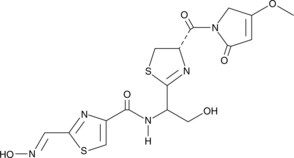Microbiology & Virology
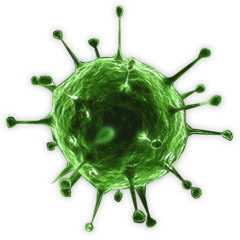
Microbiology & Virology
A virus is a small infectious agent that replicates inside living cells. Viruses cause many human diseases from small illnesses, like influenza, to more deadly diseases, like hepatitis B and HIV. Our body’s immune system defends against viral infection by generating specific antibodies to bind to and neutralize viral particles and by cell mediated immunity that destroys infected host cells.
Ziele für Microbiology & Virology
- Antibiotic(531)
- Bacterial lipoprotein targeting chaperone(1)
- CCR5(3)
- CMV(24)
- gp120/CD4(7)
- HBV(78)
- HCV(170)
- HIV(453)
- HSV(86)
- Influenza virus(139)
- NA(11)
- Reverse Transcriptase(67)
- RSV(38)
- SRPK(5)
- SARS-CoV(134)
- Antifungal(34)
- Orthopoxvirus(2)
- Antimalaria(10)
- Beta-Lactamase(0)
- VEEV(1)
- Arenavirus(10)
- Bacterial(1301)
- Enterovirus(21)
- Filovirus(5)
- Fungal(335)
- Parasite(387)
- Virus Protease(73)
- Chicken Pox & Shingles(0)
- Chikungunya(0)
- Coronaviruses(9)
- Dengue(2)
- DNA & RNA Polymerase Inhibitors(4)
- Ebola(0)
- Entry/Fusion Inhibitors(6)
- Epstein-Barr(0)
- Integrase Inhibitors(2)
- MERS(6)
- Others(0)
- Rhinoviruses(1)
- West Nile Virus(0)
- Yellow Fever(1)
- Zika(0)
- COVID-19(16)
- Antiviral(2)
Produkte für Microbiology & Virology
- Bestell-Nr. Artikelname Informationen
-
GC15424
5-hydroxypyrazine-2-carboxylic acid
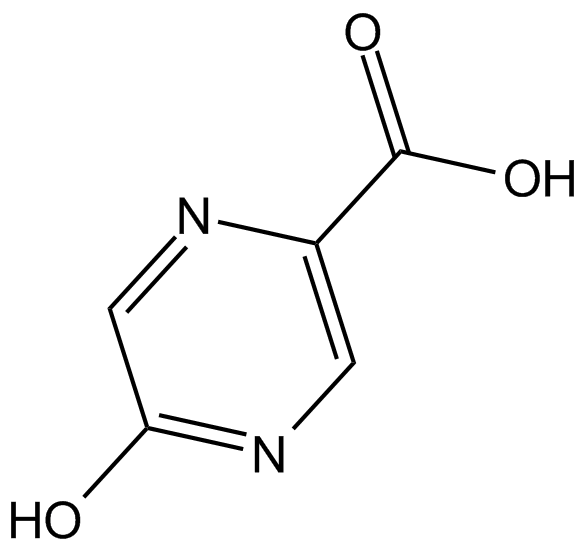
-
GC60030
5-Hydroxytoluene-2,4-disulphonic acid diammonium
5-Hydroxytoluol-2,4-disulfonsÄurediammonium ist eine Verunreinigung von Policresulen.
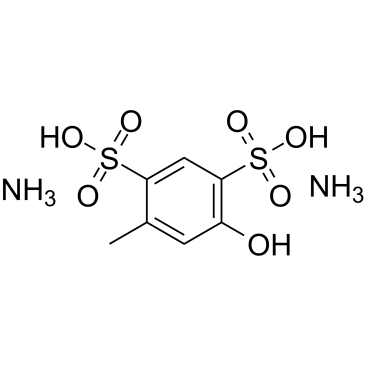
-
GC66324
5-Nitrobarbituric acid
5-NitrobarbitursÄure ist ein Hemmer des Herpes-simplex-Virus Typ 1 (HSV-1) (IC50=1,7 μM).
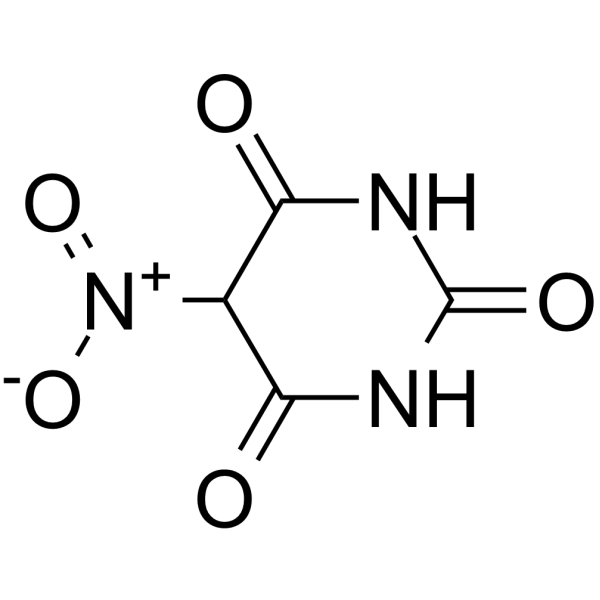
-
GC19536
6'-Sialyllactose Sodium Salt
6'-Sialyllactose (Natrium), ein vorherrschendes Milch-Oligosaccharid, reduziert die Internalisierung von Pseudomonas aeruginosa in menschliche Pneumozyten.
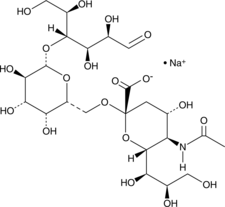
-
GC35174
6-Amino-5-azacytidine
6-Amino-5-azacytidin hemmt das Wachstum von Bakterien E.
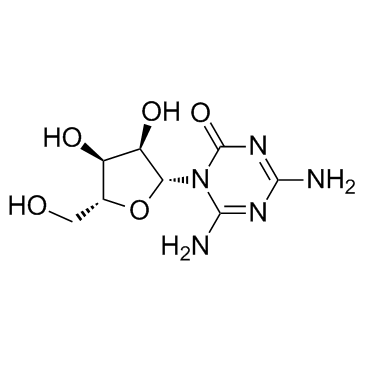
-
GC39782
6-Aminopenicillanic acid
6-AminopenicillansÄure (6-APA) ist eine wichtige Vorstufe fÜr die Synthese von -Lactam-Antibiotika.
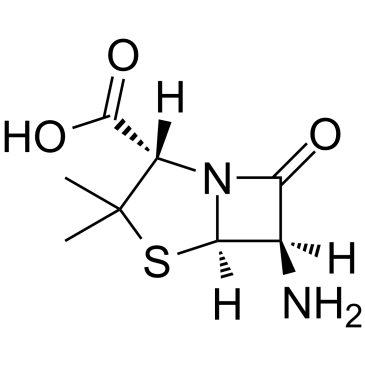
-
GC60031
6-Azathymine
6-Azathymin, ein 6-Stickstoff-Analogon von Thymin, ist ein potenter D-3-Aminoisobutyrat-Pyruvat-Aminotransferase-Inhibitor.
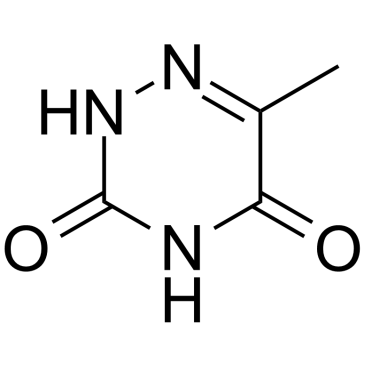
-
GC46721
6-Chloro-2-fluoropurine
A heterocyclic building block
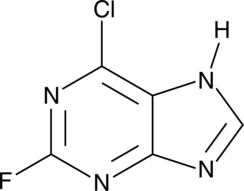
-
GC62533
6-Chloro-7-deazapurine-β-D-riboside
Chloro-7-deazapurine-β-D-ribosid ist ein Nucleosid-Derivat und hat antimykotische AktivitÄt.
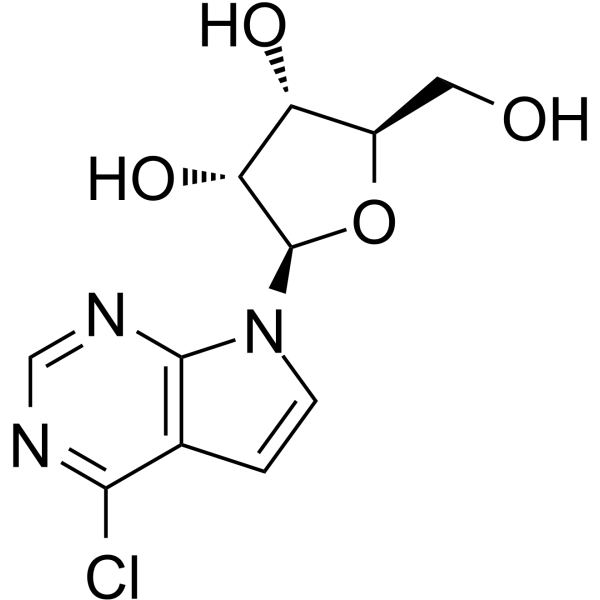
-
GC49749
6-Deoxypenciclovir
An inactive metabolite of famciclovir
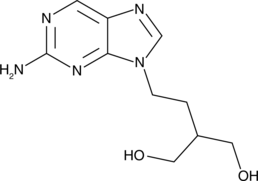
-
GC34145
6-Quinoxalinecarboxylic acid, 2,3-bis(bromomethyl)-
6-ChinoxalincarbonsÄure, 2,3-Bis(brommethyl)-, abgeleitet von 2,3-Bis(brommethyl)chinoxalin, zeigt antibakterielle AktivitÄt.
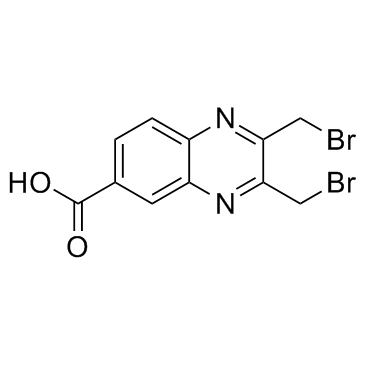
-
GC48769
7,10-dihydroxy-8(E)-Octadecenoic Acid
An antibacterial hydroxy fatty acid

-
GC33577
7-Aminoactinomycin D (7-AAD)
7-Aminoactinomycin D (7-AAD) (7-AAD), ein fluoreszierender DNA-Farbstoff, ist ein potenter RNA-Polymerase-Inhibitor.
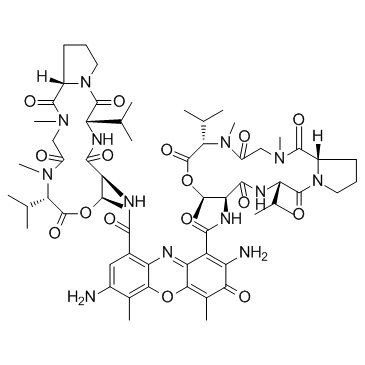
-
GC16758
7-Aminocephalosporanic acid
7-AminocephalosporansÄure ist die chemische Kernstruktur fÜr die Synthese von Cephalosporin-Antibiotika und ein potenter β-Lactamase-Inhibitor.
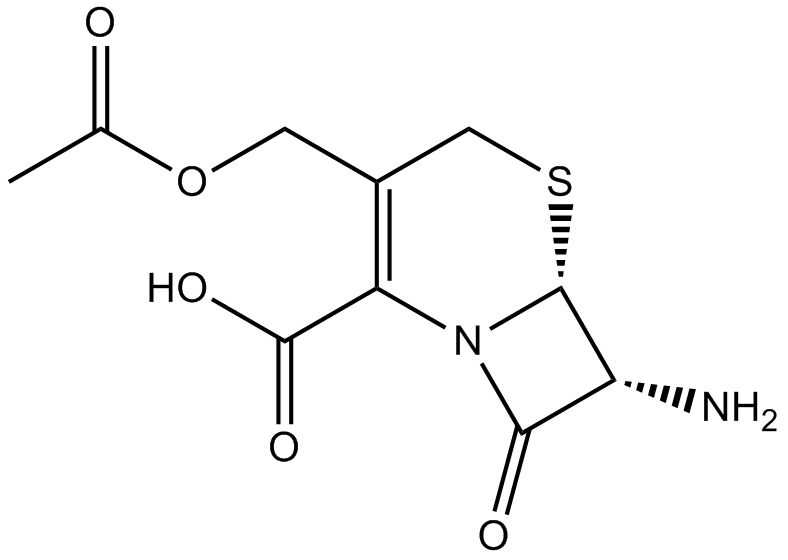
-
GC62651
7-Chloro-4-(piperazin-1-yl)quinoline
7-Chlor-4-(piperazin-1-yl)chinolon ist ein wichtiges GerÜst in der medizinischen Chemie.
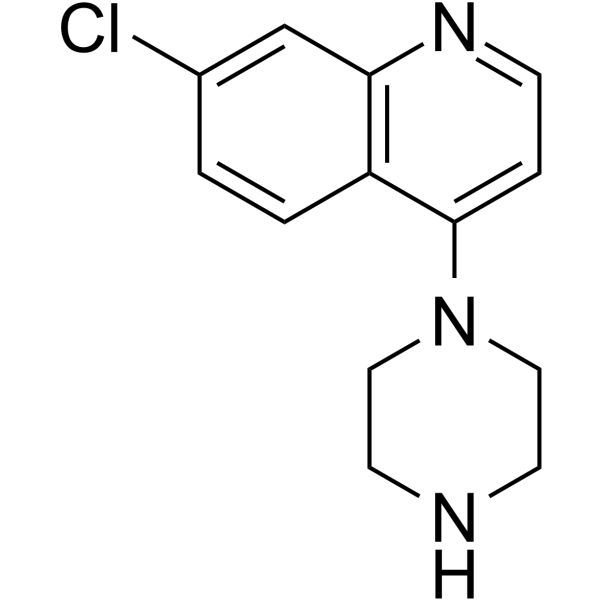
-
GC60034
7-O-Demethyl rapamycin
7-O-Demethyl-Rapamycin, ein Derivat von Rapamycin, hat antimykotische AktivitÄt und immunsuppressive Eigenschaften.
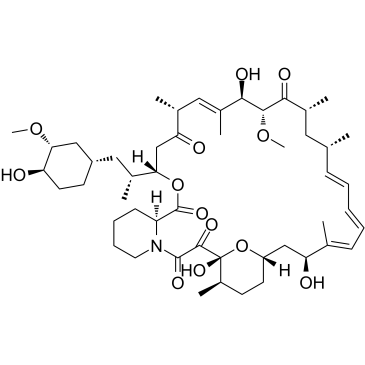
-
GC35194
7-O-Methylaloeresin A
7-O-Methylaloeresin A ist 5-Methylchromonglykosid, isoliert aus Commiphora socotrana (Burseraceae).
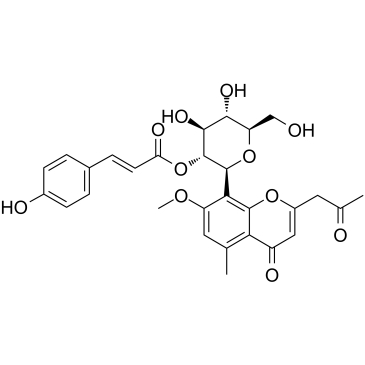
-
GC35196
7-Prenyloxycoumarin
7-Prenyloxycumarin (7-O-Prenylumbelliferon) ist ein sekundÄrer Metabolit des endophytischen Pilzes Annulohypoxylon ilanense.
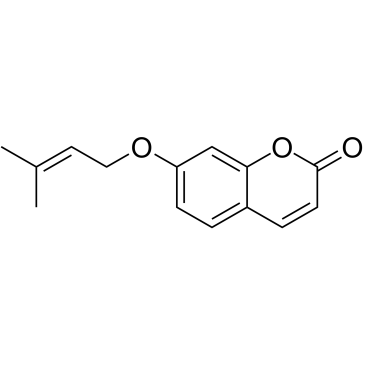
-
GC35199
8-Deoxygartanin
8-Desoxygartanin, ein prenyliertes Xanthon aus G.
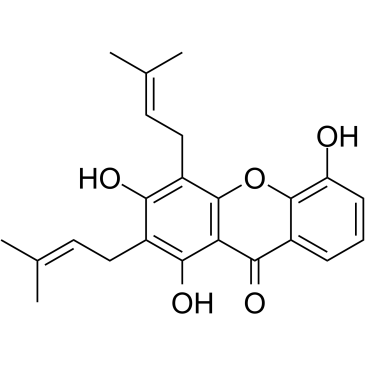
-
GC35200
8-Epidiosbulbin E acetate
8-Epidiosbulbin E-Acetat, ein Furanoid, ist reichlich in Dioscorea bulbifera L.
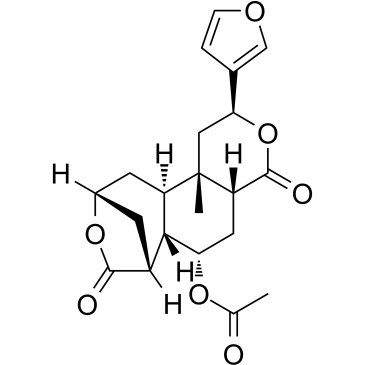
-
GC30243
8-Hydroxyquinoline
8-Hydroxychinolin (8-Hydroxychinolin) ist ein monoprotischer zweizÄhniger Chelatbildner, der antiseptische, desinfizierende und pestizide Eigenschaften aufweist und als Transkriptionshemmer fungiert.
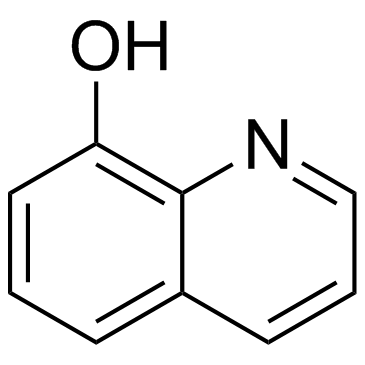
-
GC30119
9-Aminoacridine (Aminacrine)
9-Aminoacridin (Aminacrin) (Aminacrin) ist ein stark fluoreszierender Farbstoff, der als topisches Antiseptikum und experimentell als Mutagen, ein intrazellulÄrer pH-Indikator, verwendet wird.
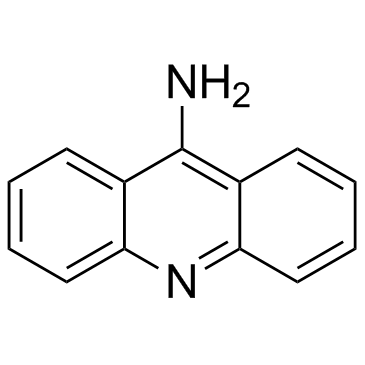
-
GC60036
9-Hydroxycalabaxanthone
9-Hydroxycalabaxanthon (Xanthon I) ist ein bekanntes Xanthon, das aus Garcinia mangostana Linn isoliert wurde.
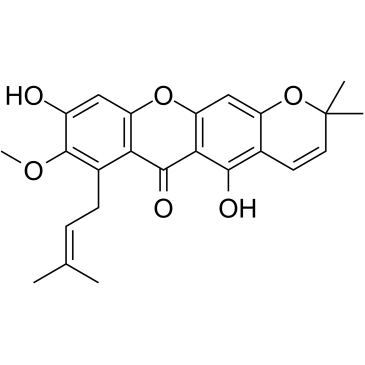
-
GC35208
9-Propenyladenine
9-Propenyladenin ist eine mutagene Verunreinigung in Tenofovirdisoproxilfumarat.
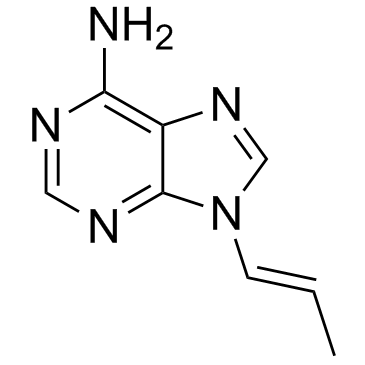
-
GC12922
A-54556A
natural acyldepsipeptide (ADEP) antibiotic
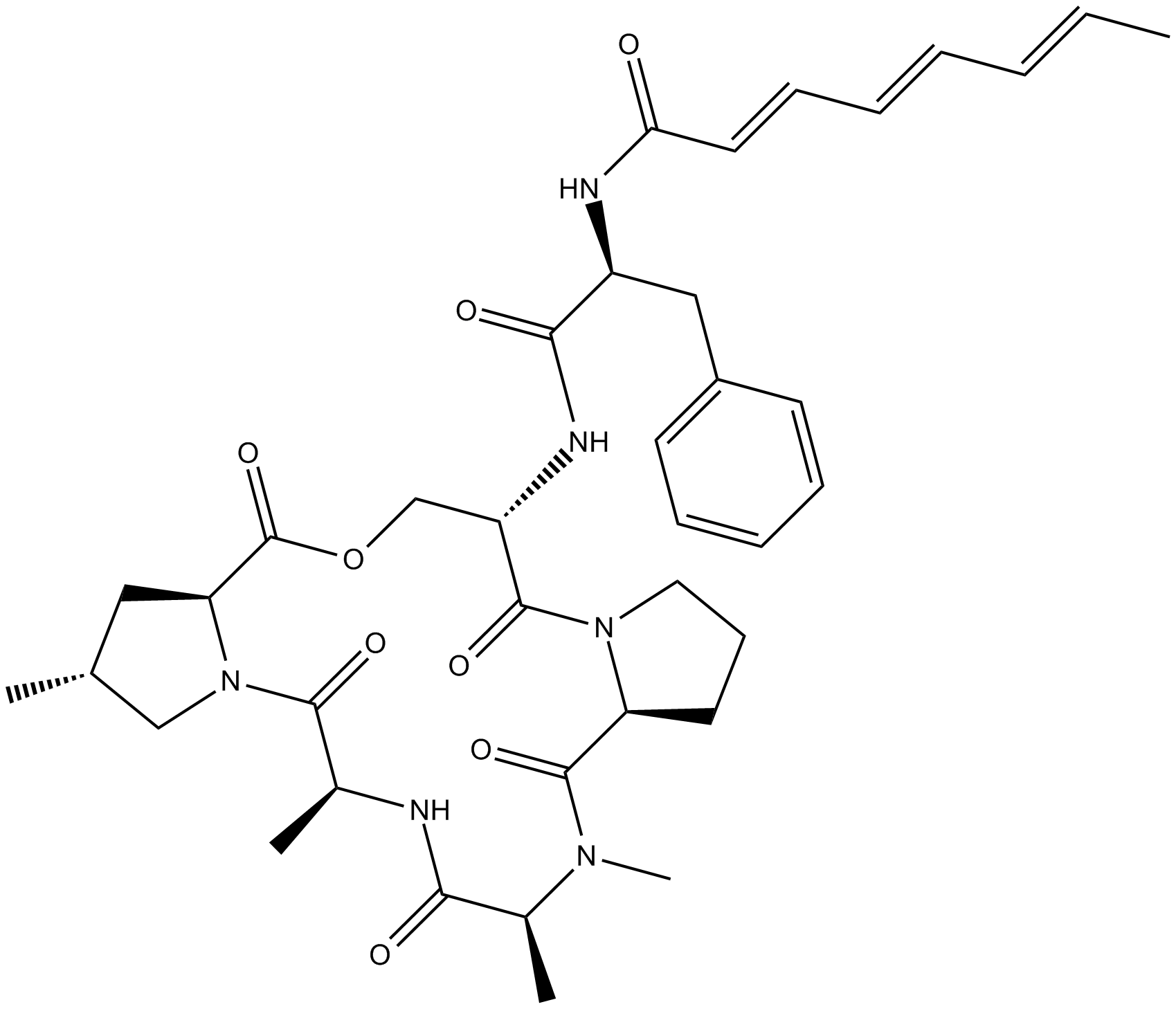
-
GC60546
A2ti-1
A2ti-1 ist ein selektiver und hochaffiner Annexin A2/S100A10-Heterotetramer (A2t)-Inhibitor mit einer IC50 von 24 μM.
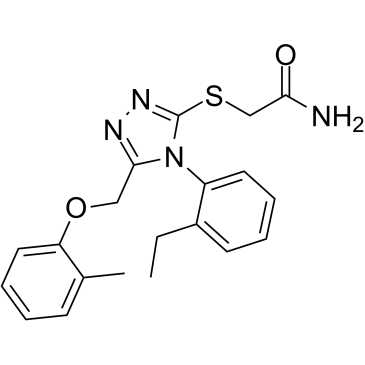
-
GC61878
A2ti-2
A2ti-2 ist ein selektiver und niedrigaffiner Annexin-A2/S100A10-Heterotetramer (A2t)-Inhibitor mit einem IC50-Wert von 230 μM.
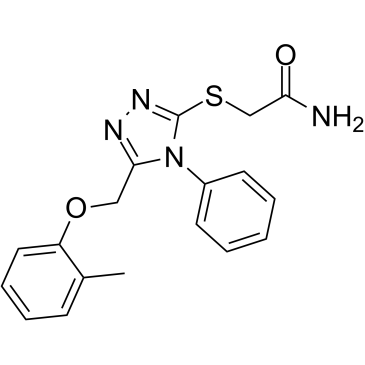
-
GC32373
A7132
A7132 ist ein antibakterielles Mittel.
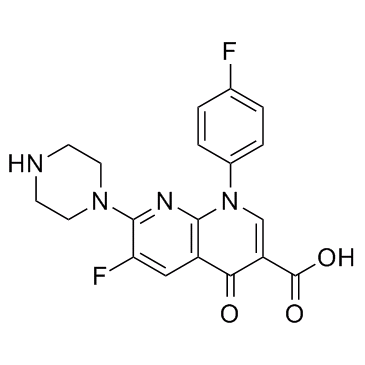
-
GC52230
AA3-DLin
An ionizable cationic amino lipid
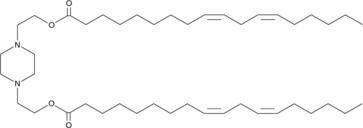
-
GC64241
AAA-10
AAA-10 ist ein oral aktiver Inhibitor der bakteriellen Gallensalzhydrolase (BSH) im Darm mit IC50-Werten von 10 nM, 80 nM gegen B.
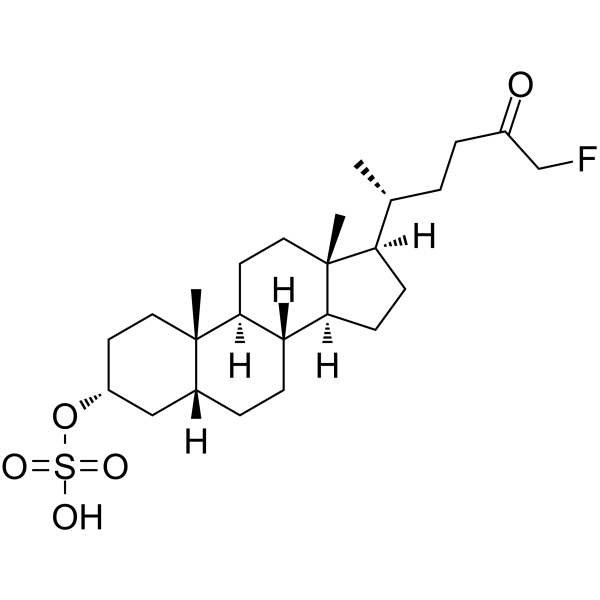
-
GC32165
AAI101
AAI101 (AAI101) ist ein β-Lactamase-Inhibitor mit erweitertem Spektrum gegen viele resistente gramnegative Pathogene.
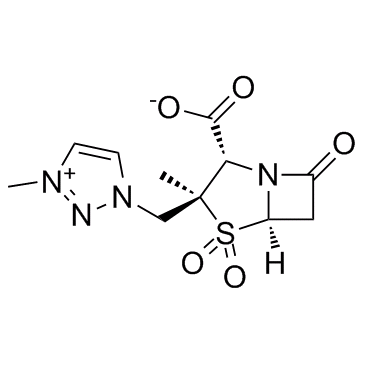
-
GC19014
AB-423
AB-423 ist ein Inhibitor der HBV-Kapsid-Assemblierung und hemmt wirksam die HBV-Replikation mit EC50/EC90 von 0,08-0,27 μM/0,33-1,32 μM in Zellen.
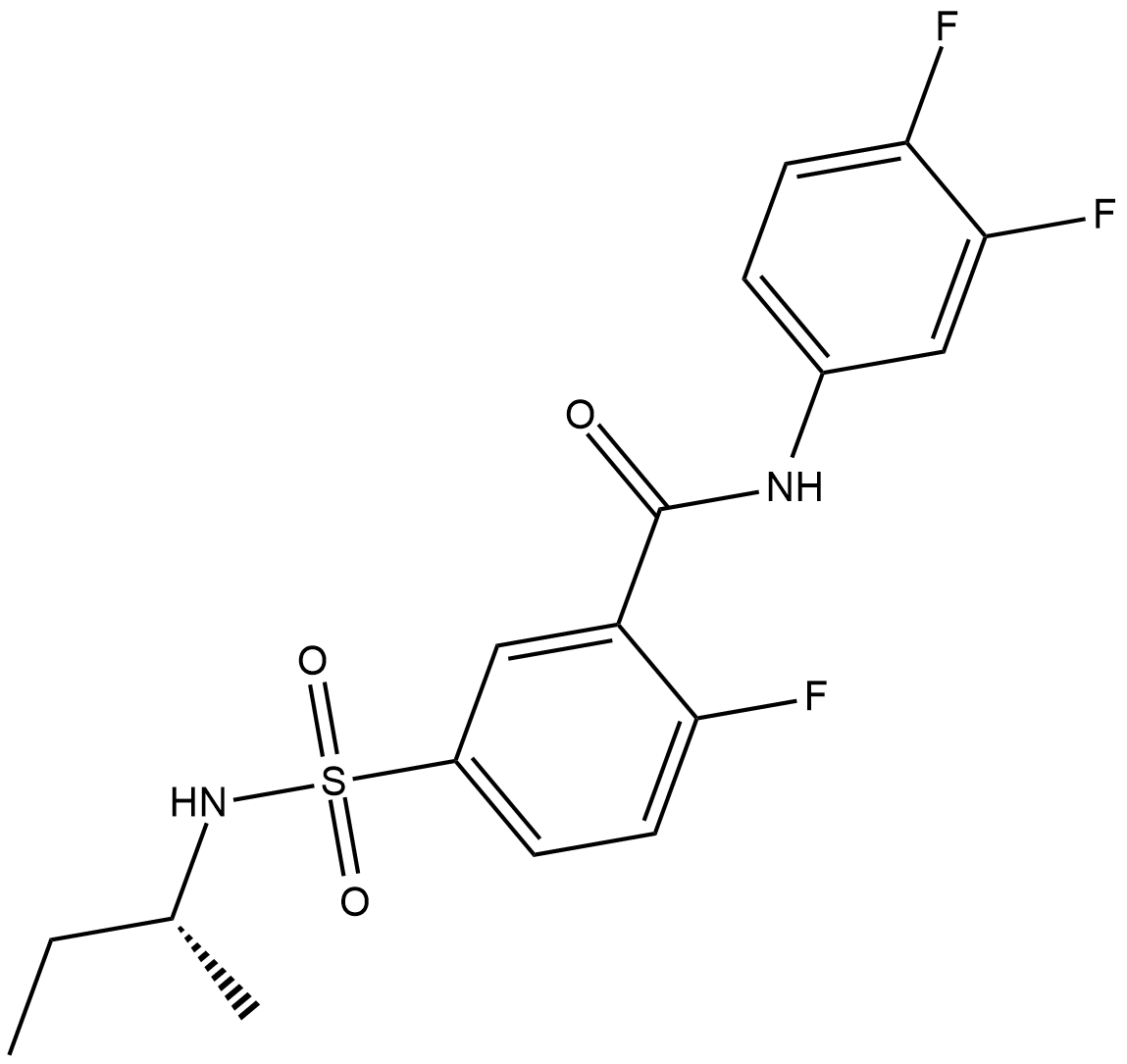
-
GC13805
Abacavir
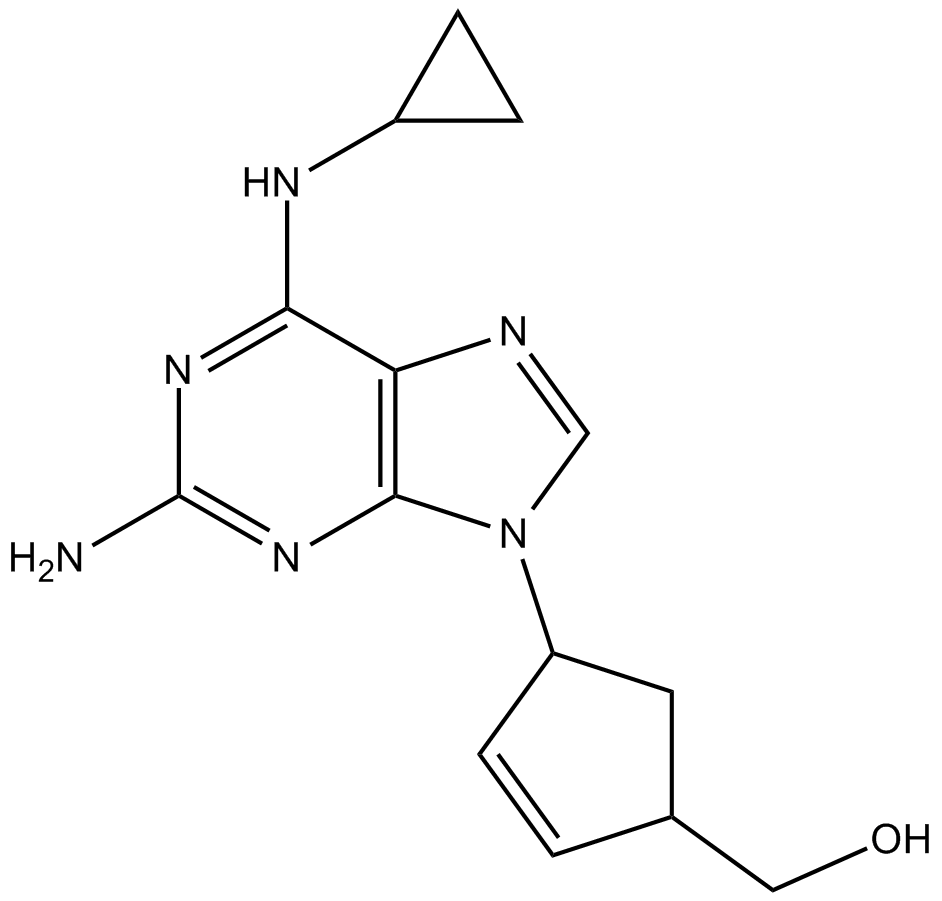
-
GC42667
Abacavir Carboxylate
Abacavir carboxylate is an inactive metabolite of the HIV-1 reverse transcriptase inhibitor abacavir.
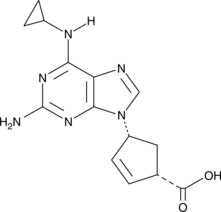
-
GC11274
Abacavir sulfate
Abacavir-Sulfat (Abacavir-Hemisulfat) ist ein kompetitiver, oral aktiver nukleosidischer Reverse-Transkriptase-Hemmer.
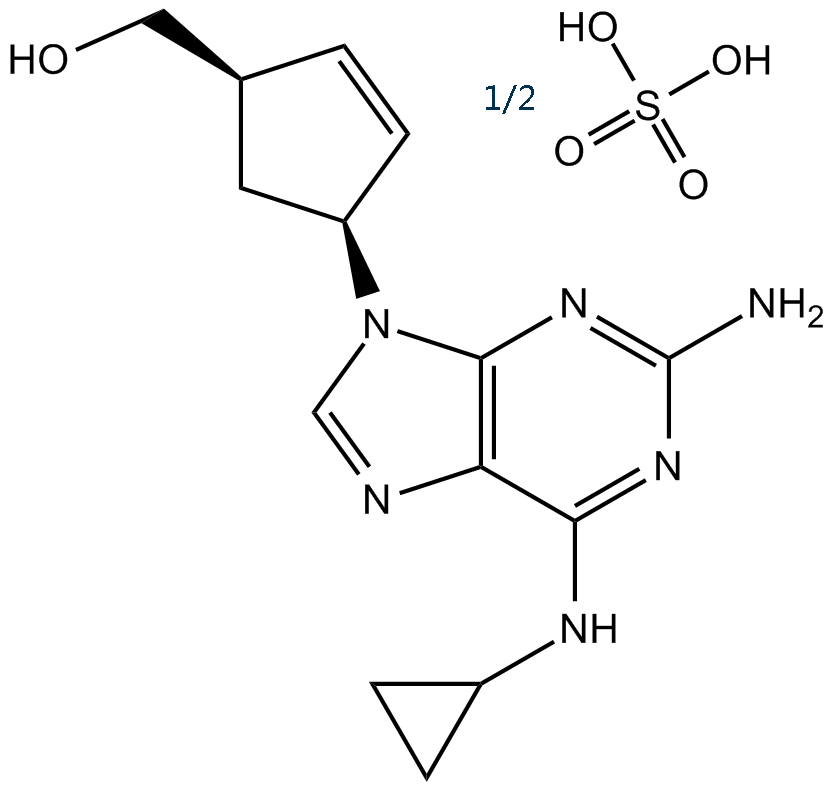
-
GC46767
Abacavir-d4
An internal standard for the quantification of abacavir
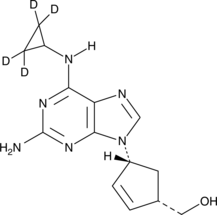
-
GC46769
Abametapir
Abametapir ist ein Metalloproteinase (MMP)-Hemmer, der Metalloproteinasen angreifen kann, die fÜr das SchlÜpfen von Eiern und die Entwicklung von LÄusen entscheidend sind.
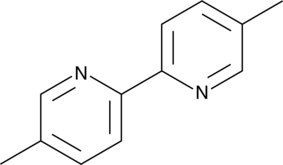
-
GC19409
ABBV-744
ABBV-744 ist ein erstklassiger, oral aktiver und selektiver Inhibitor der BDII-DomÄne von Proteinen der BET-Familie mit IC50-Werten im Bereich von 4 bis 18 nM fÜr BRD2, BRD3, BRD4 und BRDT.
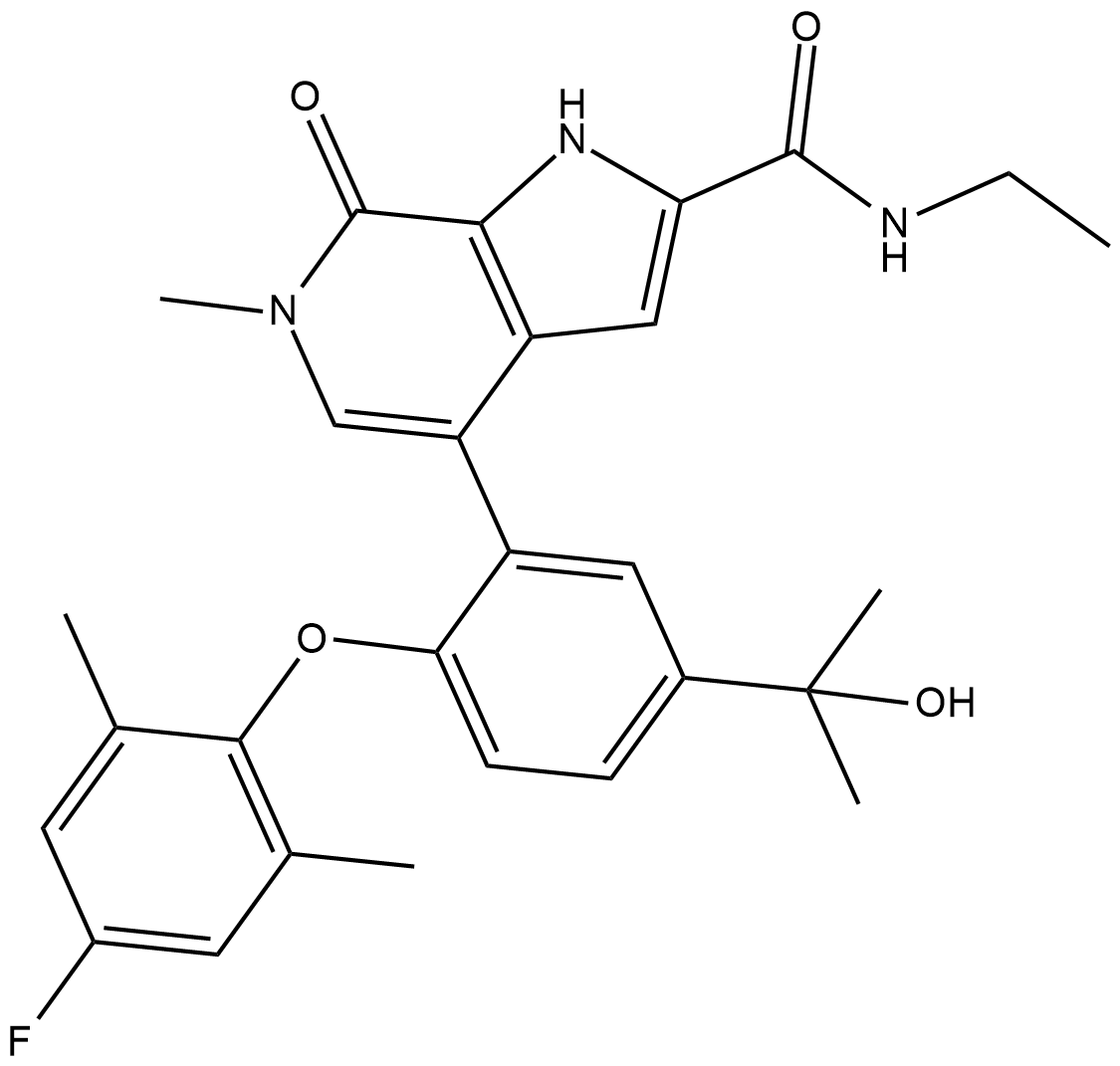
-
GC40831
Abietic Acid
AbietinsÄure, ein aus Pimenta racemosa var. isoliertes Diterpen.
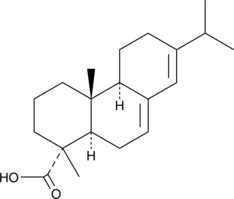
-
GC39655
ABMA
ABMA ist ein Breitbandinhibitor von intrazellulÄren Toxinen und Pathogenen.
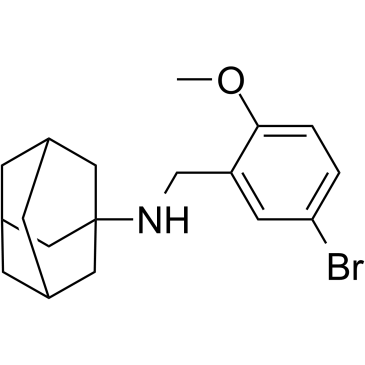
-
GC25027
Absinthin
Absinthin (Absynthine) is a naturally produced triterpene lactone from Artemisia absinthium with anti-inflammatory properties. Absinthin significantly enhances the expression of matrix metalloproteinase-8 (MMP-8) and is a possible treatment candidate for Acute lung injury (ALI).
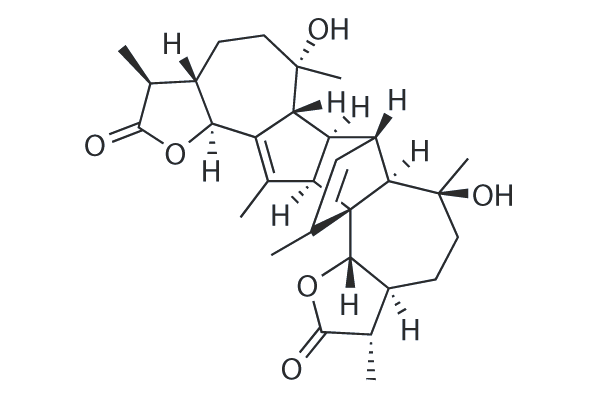
-
GC33977
ABT-072
ABT-072 ist ein oral aktiver und potenter Nicht-Nukleosid-Inhibitor der HCV-NS5B-Polymerase (HCV GT1a EC50=1 nM; HCV GT1b EC50=0,3 nM).
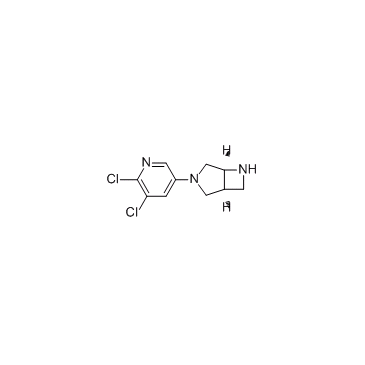
-
GC63300
ABT-072 potassium trihydrate
ABT-072 (Kaliumtrihydrat) ist ein oral aktiver und potenter nicht-nukleosidischer HCV-NS5B-Polymerase-Inhibitor (HCV GT1a EC50=1 nM; HCV GT1b EC50=0,3 nM).
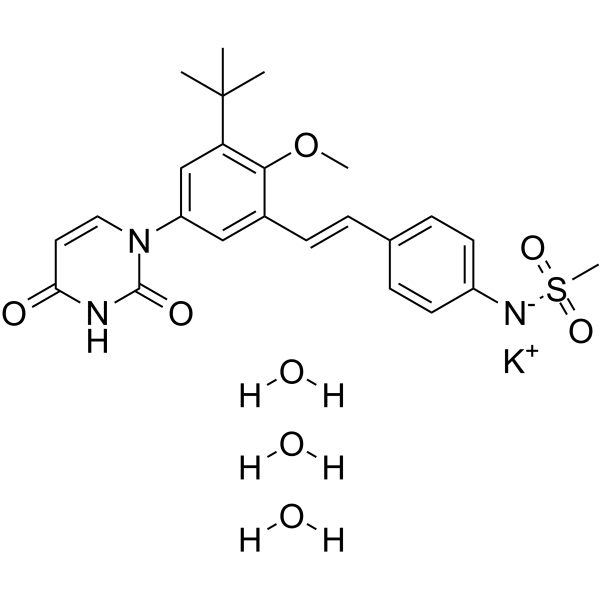
-
GC32145
ABX464
ABX464 (ABX464) ist ein wirksames Anti-HIV-Mittel.
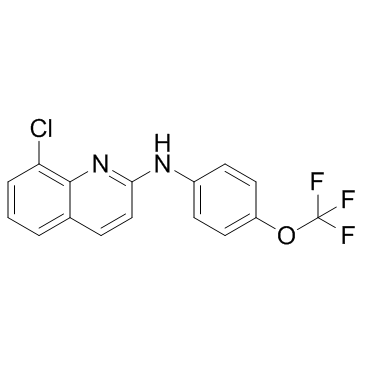
-
GC32113
Ac-CoA Synthase Inhibitor1
Ac-CoA-Synthase-Inhibitor1 ist ein potenter, reversibler Acetat-abhÄngiger Acetyl-CoA-Synthase-2 (ACSS2)-Inhibitor mit einem IC50 von 0,6 μM.
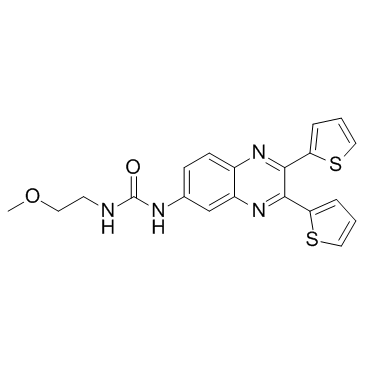
-
GC33978
Acetohydroxamic acid (AHA)
AcetohydroxamsÄure (AHA) ist ein potenter und irreversibler Inhibitor der bakteriellen und pflanzlichen Urease und wird auch als Zusatztherapie bei chronischen Harnwegsinfektionen eingesetzt.
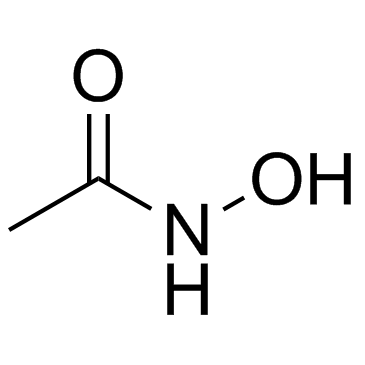
-
GC41594
Acetyl-L-Homoserine lactone
Acetyl-L-homoserine lactone belongs to the family of N-acylated homoserine lactones (HSLs) and has an acyl chain length of two carbons.
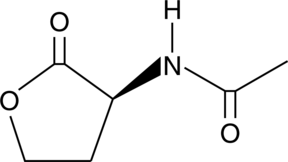
-
GA20545
Acetyl-Pepstatin
Acetyl-Pepstatin ist ein potenter klassischer Inhibitor von Aspartat-Proteasen (PRs) mit XMRV-PR- und HIV-1-PR-Ki-Werten von 712 nM und 13 nM.

-
GC60556
Acetylalkannin
Acetylalkannin (Alkanninacetat) ist ein aus Arnebia euchroma isoliertes Isohexenylnaphthazarin-Pigment mit antimikrobieller und zytotoxischer AktivitÄt.
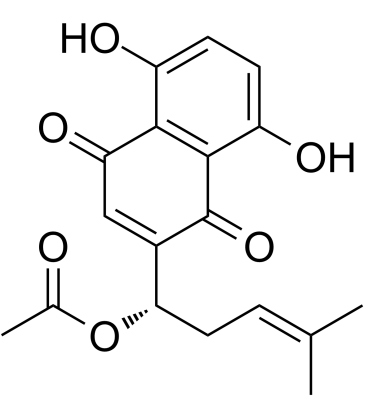
-
GC33970
Acetylazide (Acetylkelfizina)
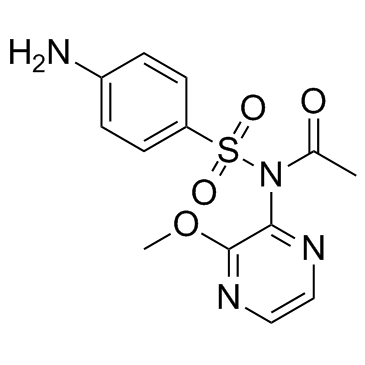
-
GC35232
Acetyllovastatin
Acetyllovastatin, ein Acetat von Lovastatin, zeigt eine mÄßige Hemmwirkung gegen das Enzym Acetylcholinesterase mit einem IC50 von 79 μg/ml.
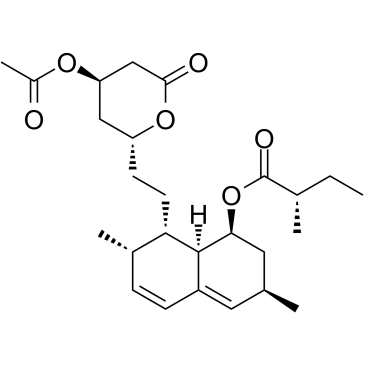
-
GC35237
Acetylspiramycin
Acetylspiramycin (Spiramycin B; Spiramycin II; Foromacidin B) ist ein starkes und oral aktives Makrolid-Antibiotikum, das von verschiedenen Streptomyces-Arten, einem acetylierten Derivat von Spiramycin, produziert wird.
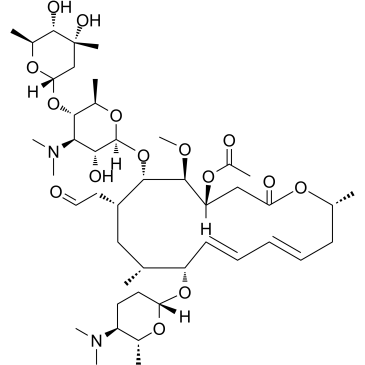
-
GC32305
ACH-806 (GS9132)
ACH-806 (GS9132) ist ein NS4A-Antagonist, der die Replikation des Hepatitis-C-Virus (HCV) mit einem EC50-Wert von 14 nM hemmen kann.
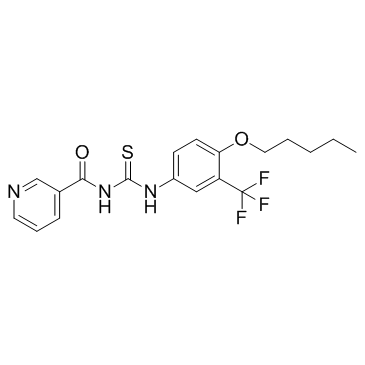
-
GC60039
ACHN-975 TFA
ACHN-975 TFA ist ein selektiver LpxC-Inhibitor und weist eine subnanomolare LpxC-InhibitoraktivitÄt auf.
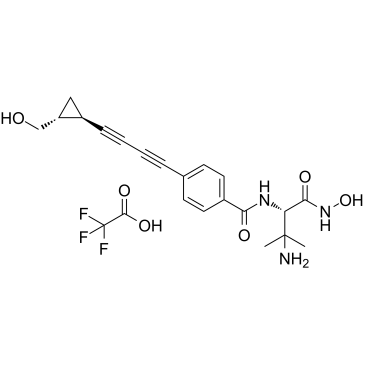
-
GC42707
Acivicin
Acivicin (AT-125), ein von Streptomyces sviceus produziertes Naturprodukt, ist ein Inhibitor der γ-Glutamyl-Transpeptidase (GGT).
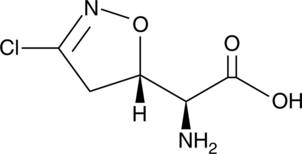
-
GC60562
Acivicin hydrochloride
Acivicinhydrochlorid (AT-125-Hydrochlorid), ein von Streptomyces sviceus produziertes Naturprodukt, ist ein Inhibitor der γ-Glutamyl-Transpeptidase (GGT).
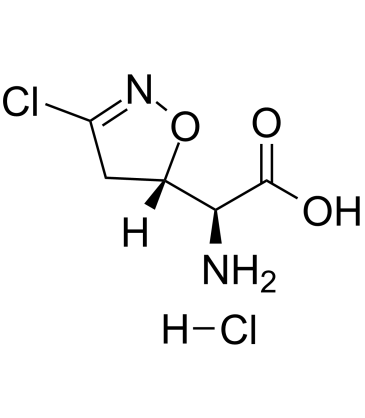
-
GC32137
Acoziborole (SCYX-7158)
Acoziborole (SCYX-7158) (SCYX-7158) ist ein wirksames, sicheres und oral aktives Antiprotozoenmittel fÜr die Erforschung der menschlichen afrikanischen Trypanosomiasis (HAT).
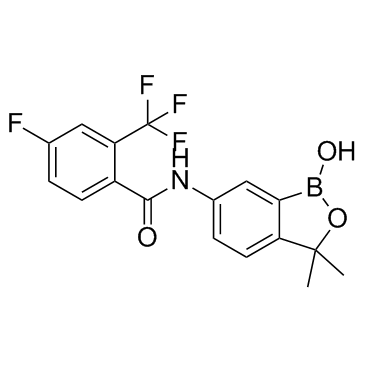
-
GC61894
Acridone
Acridon ist eine organische Verbindung, die auf dem Acridin-Skelett basiert.
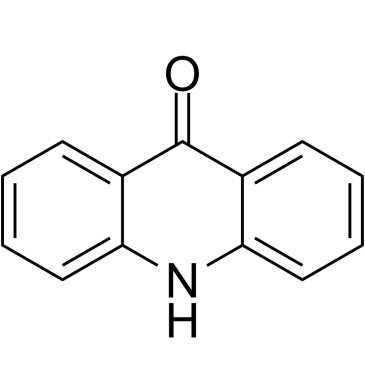
-
GC62354
Acriflavine hydrochloride
Acriflavinhydrochlorid (Acriflaviniumchloridhydrochlorid) ist ein fluoreszierender Acridinfarbstoff, der zur Markierung von NukleinsÄure verwendet werden kann.
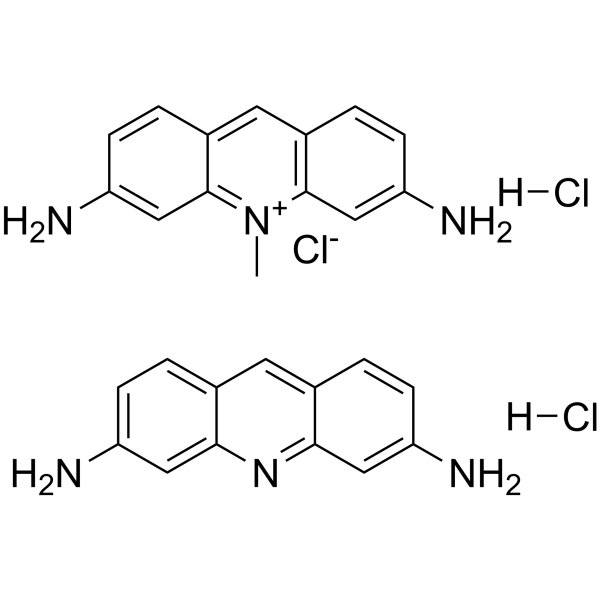
-
GC63450
ACT-451840
ACT-451840 ist eine oral aktive, potente und wenig toxische Verbindung, die AktivitÄt gegen empfindliche und resistente Plasmodium-falciparum-StÄmme zeigt.
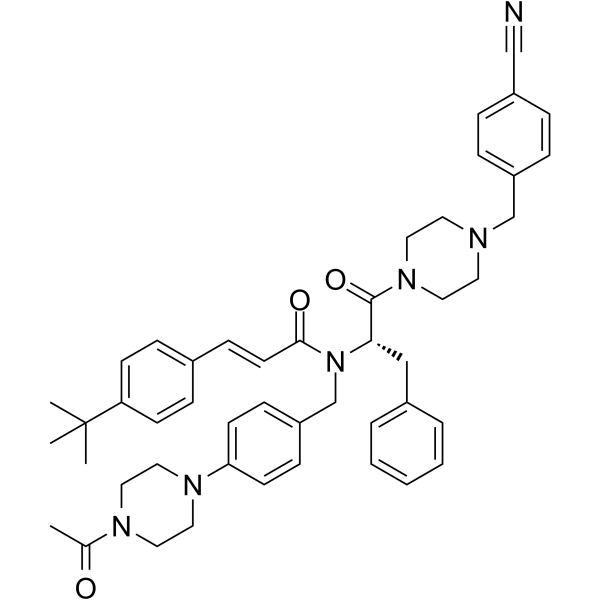
-
GC10552
Actagardin
tetracyclic antibiotic
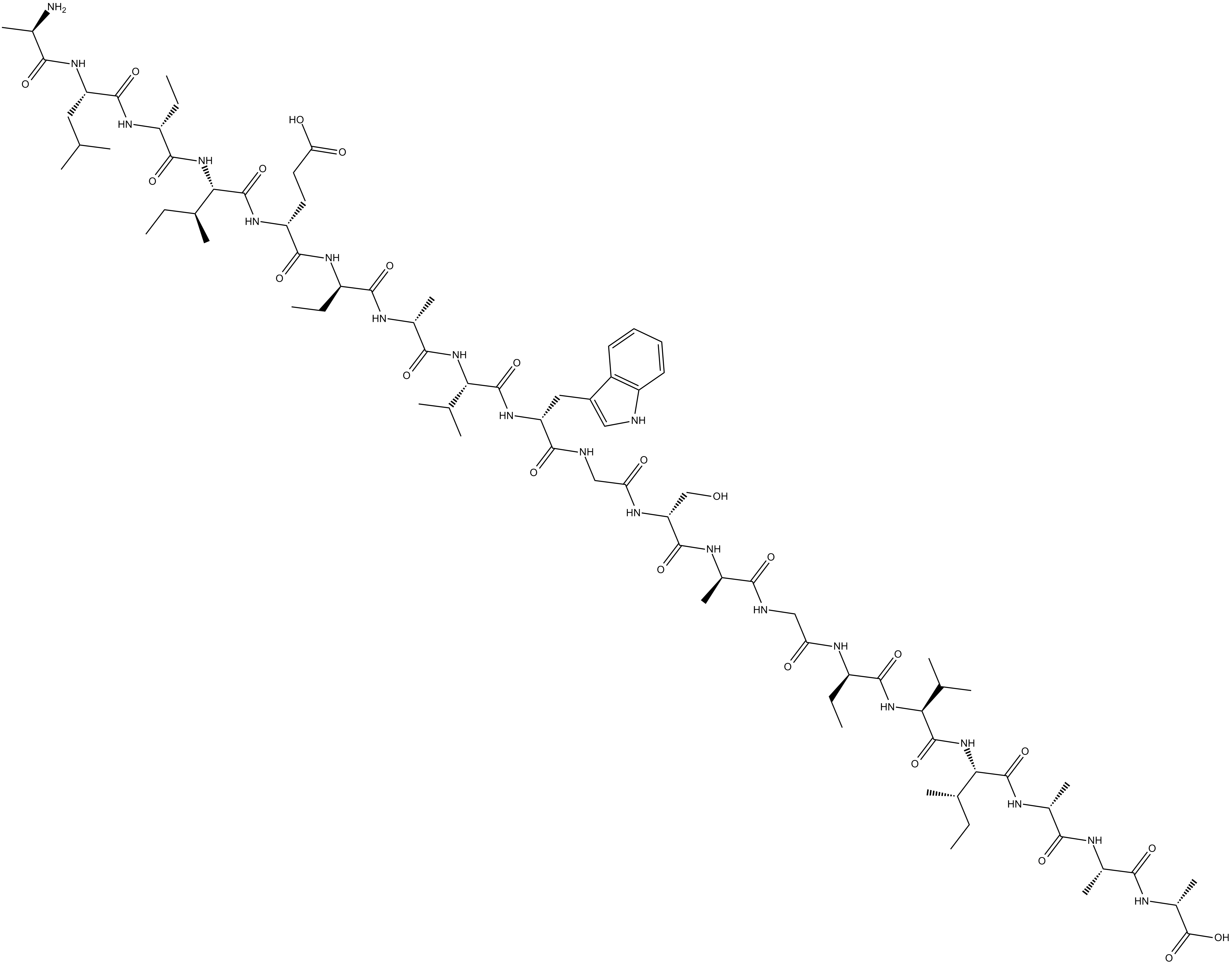
-
GC16350
Actinonin
Actinonin ((-)-Actinonin) ist ein natÜrlich vorkommender antibakterieller Wirkstoff, der von Actinomyces produziert wird.
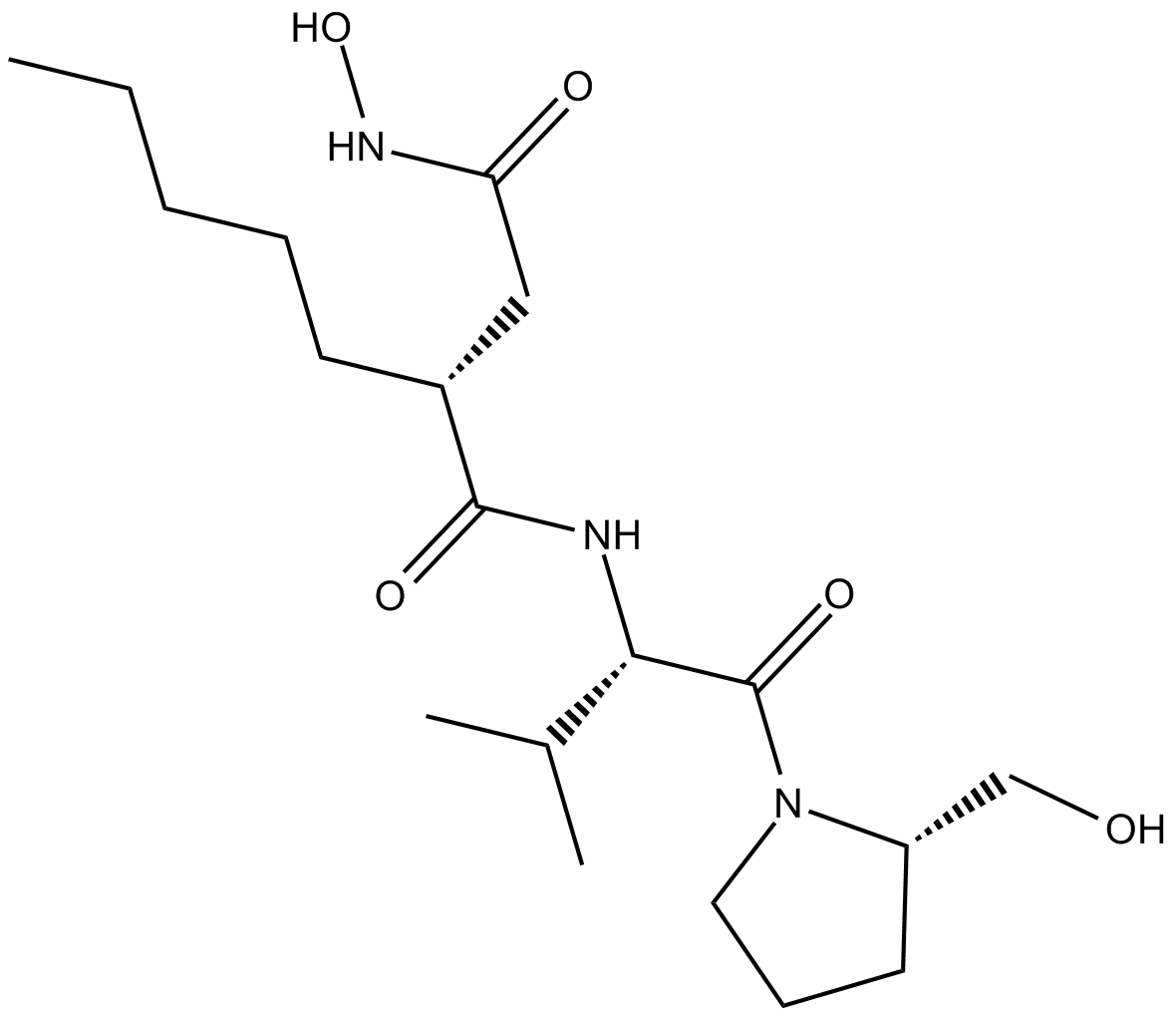
-
GC35247
ACX-362E
ACX-362E (ACX-362E) ist ein erster oral aktiver DNA-Polymerase IIIC (pol IIIC)-Inhibitor seiner Klasse mit einem Ki von 0,325 μM fÜr die DNA pol IIIC von C.
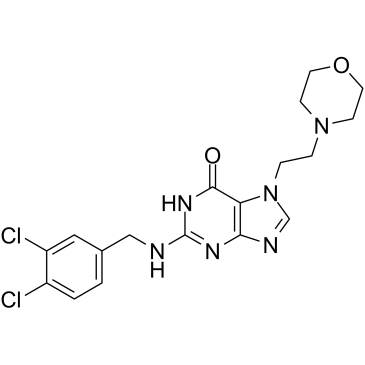
-
GC17186
Acyclovir
Aciclovir (Aciclovir) ist ein starkes, oral aktives antivirales Mittel.
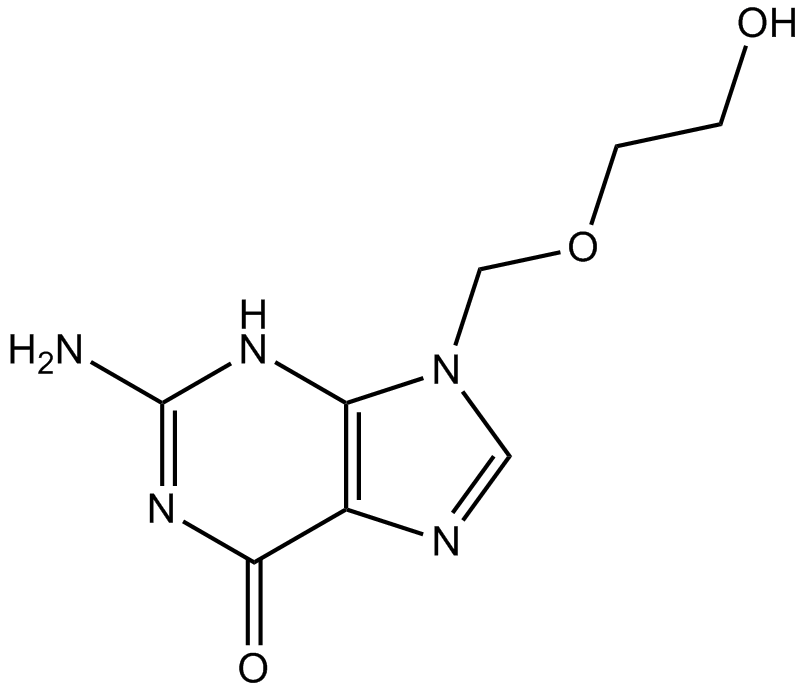
-
GC46797
Acyclovir-d4
An internal standard for the quantification of acyclovir
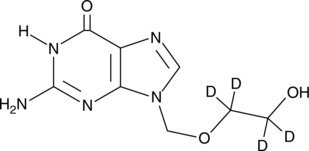
-
GC42731
Adefovir
Adefovir (GS-0393) ist ein antivirales Adenosinmonophosphat-Analogon, das nach intrazellulÄrer Umwandlung in Adefovir-Diphosphat die HBV-DNA-Polymerase hemmt.
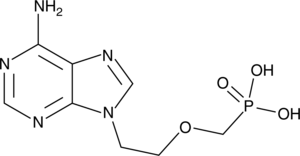
-
GC16841
Adefovir Dipivoxil
Adefovir Dipivoxil, ein Adenosin-Analogon, ist ein orales Prodrug des nukleosidischen Reverse-Transkriptase-Hemmers Adefovir.
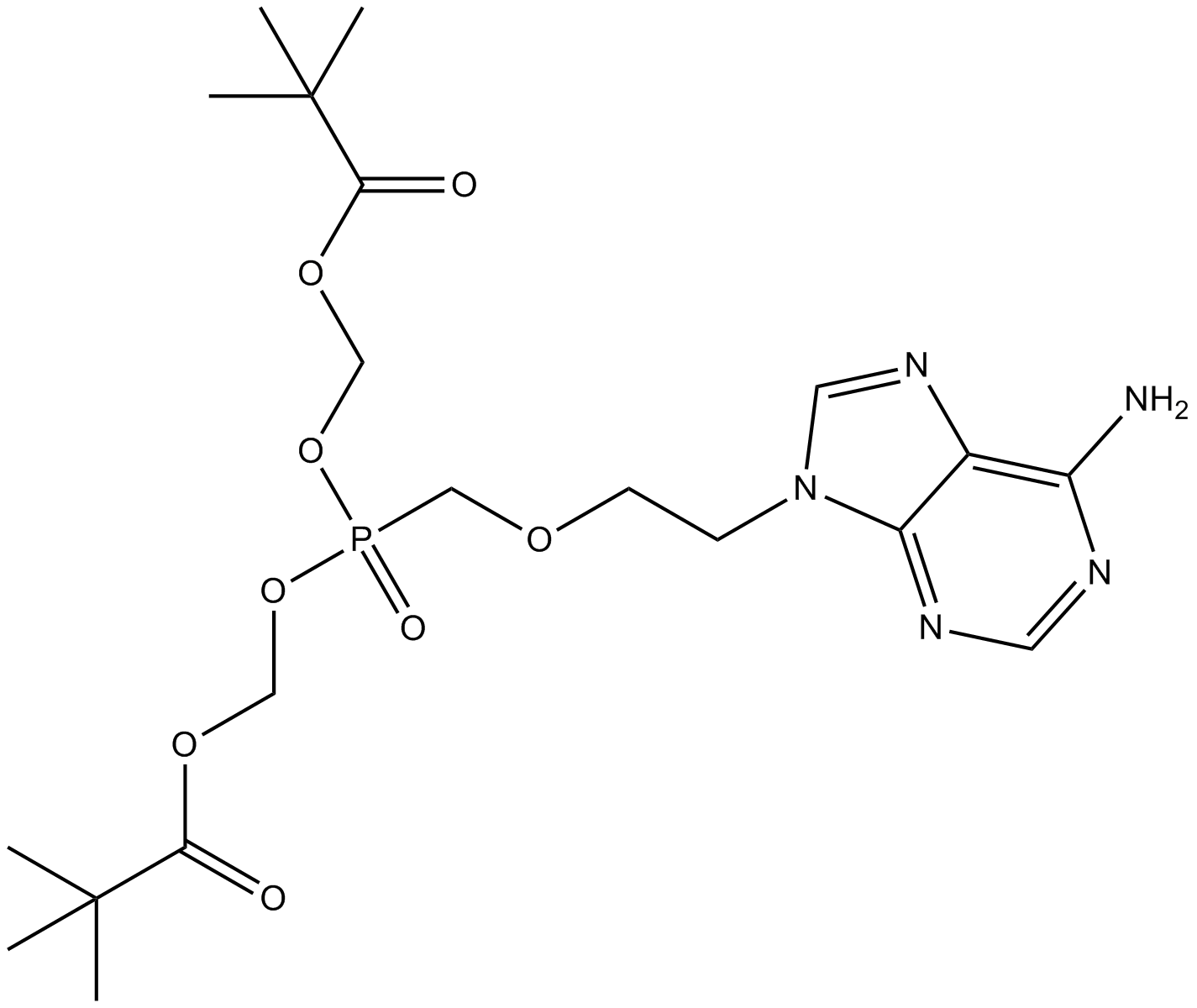
-
GC46805
Adefovir-d4
An internal standard for the quantification of adefovir

-
GC14502
AEBSF.HCl
AEBSF.HCl is a broad-spectrum irreversible inhibitor of serine proteases, which can inhibit chymotrypsin, kallikrein, plasmin, thrombin, trypsin and related thrombolytic enzymes.
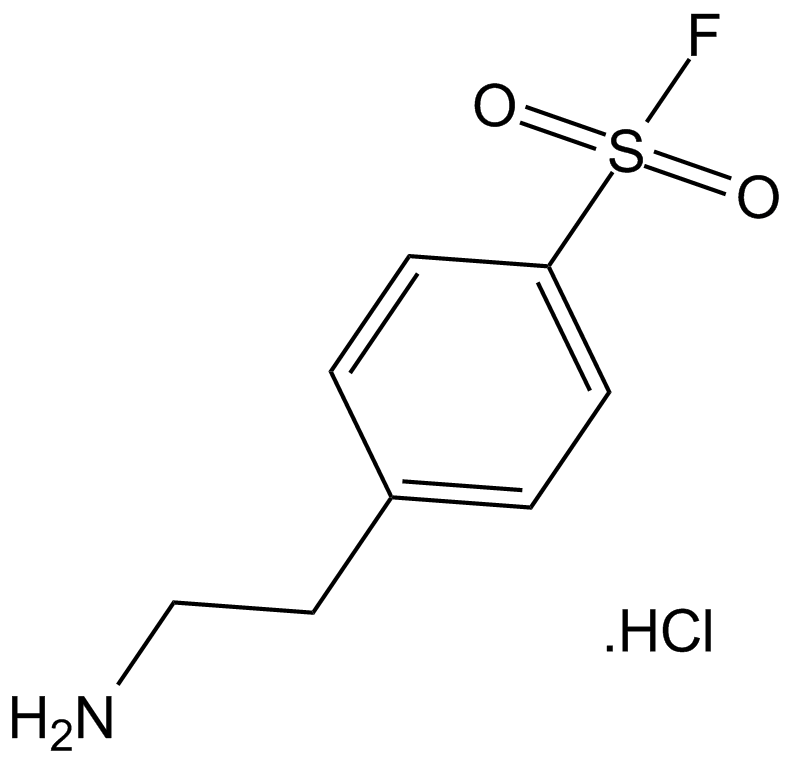
-
GC60566
Aegeline
Aegeline, ein Hauptalkaloid, imitiert das Hefe-SNARE-Protein Sec22p bei der UnterdrÜckung der α-Synuclein- und Bax-ToxizitÄt in Hefe.
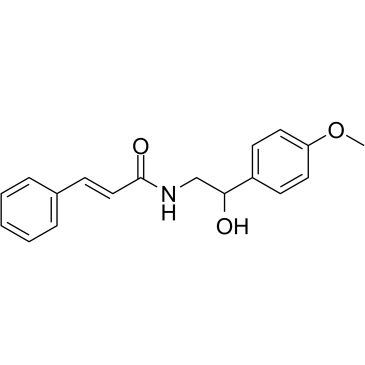
-
GC15759
Aerothionin
antimycobacterial activity
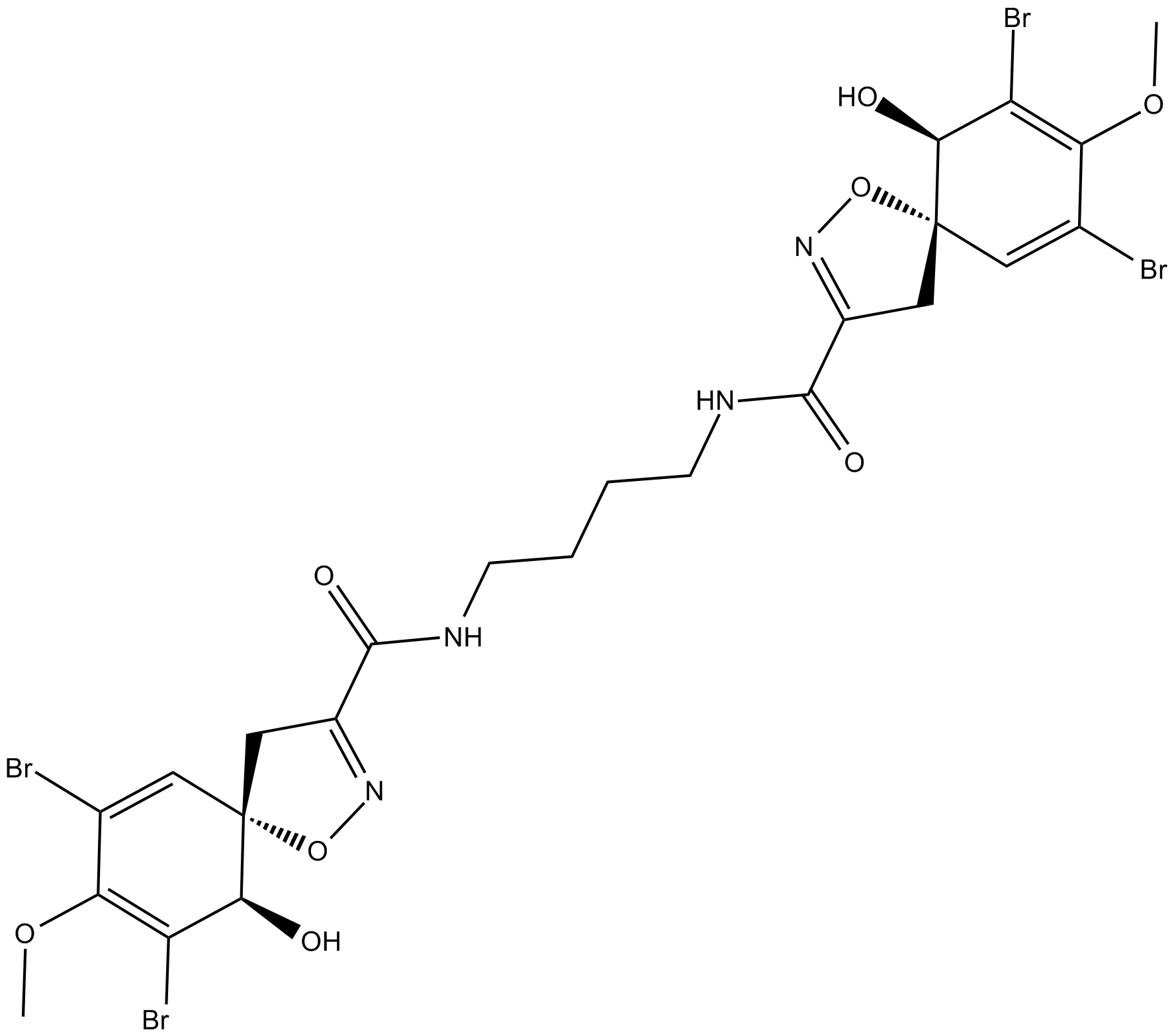
-
GC32295
Afabicin (Debio 1450)
Afabicin (Debio 1450) (Debio 1450) ist das Prodrug von Debio1452, das spezifisch gegen Staphylokokken ohne signifikante AktivitÄt gegen andere grampositive oder gramnegative Arten gerichtet ist.
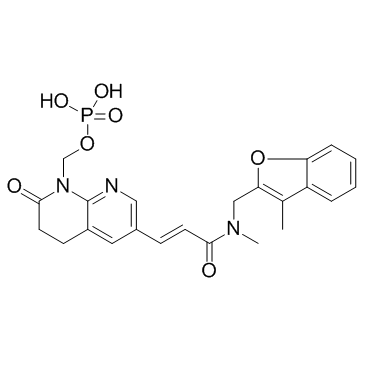
-
GC35261
Aflatoxin B1
Aflatoxin B1, eine Klasse von karzinogenen Mykotoxinen, die von Aspergillus-Pilzen produziert werden, führt stets zur Entwicklung von hepatozellulärem Karzinom (HCC) bei Menschen und Tieren.
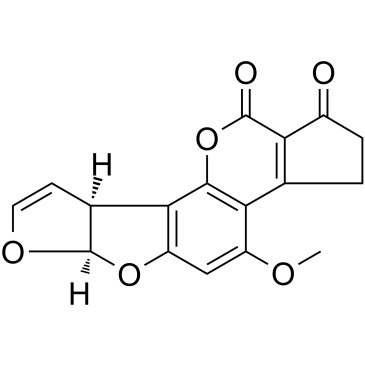
-
GC41359
Aflatoxin B2
Aflatoxins are naturally occuring mycotoxins produced by various species of the mold Aspergillus, which can be found in legumes, corn, soybeans, rice, milk, and cheese.
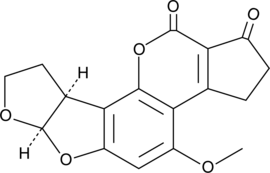
-
GC42744
Aflatoxin G1
Aflatoxin G1 is a food contaminant produced by various species of the common soil fungus, Aspergillus and is associated with toxicity and hepatocarcinogenicity in human and animal populations.
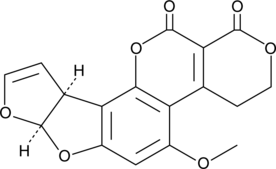
-
GC42745
Aflatoxin M1
Aflatoxin M1 is a natural oxidative metabolite of the mycotoxin aflatoxin B1.
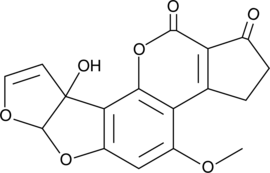
-
GC40646
AFN-1252
AFN-1252 (Debio 1452) ist ein starker Inhibitor der Enoyl-Acyl-TrÄgerprotein-Reduktase (FabI), der alle klinischen Isolate von Staphylococcus aureus und Staphylococcus epidermidis bei Konzentrationen von ≤0,12 μg/ml hemmte.
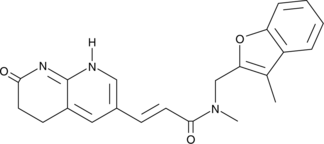
-
GC50013
AG 1478 hydrochloride
AG 1478-Hydrochlorid (Tyrphostin AG 1478-Hydrochlorid) ist ein selektiver EGFR-Tyrosinkinase-Inhibitor mit IC50 von 3 nM.
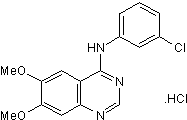
-
GC11744
AG 555
AG 555 (Tyrphostin AG 555), ein potentes antiretrovirales Medikament, ist ein potenter und selektiver Inhibitor von EGFR und blockiert die Cdk2-Aktivierung.
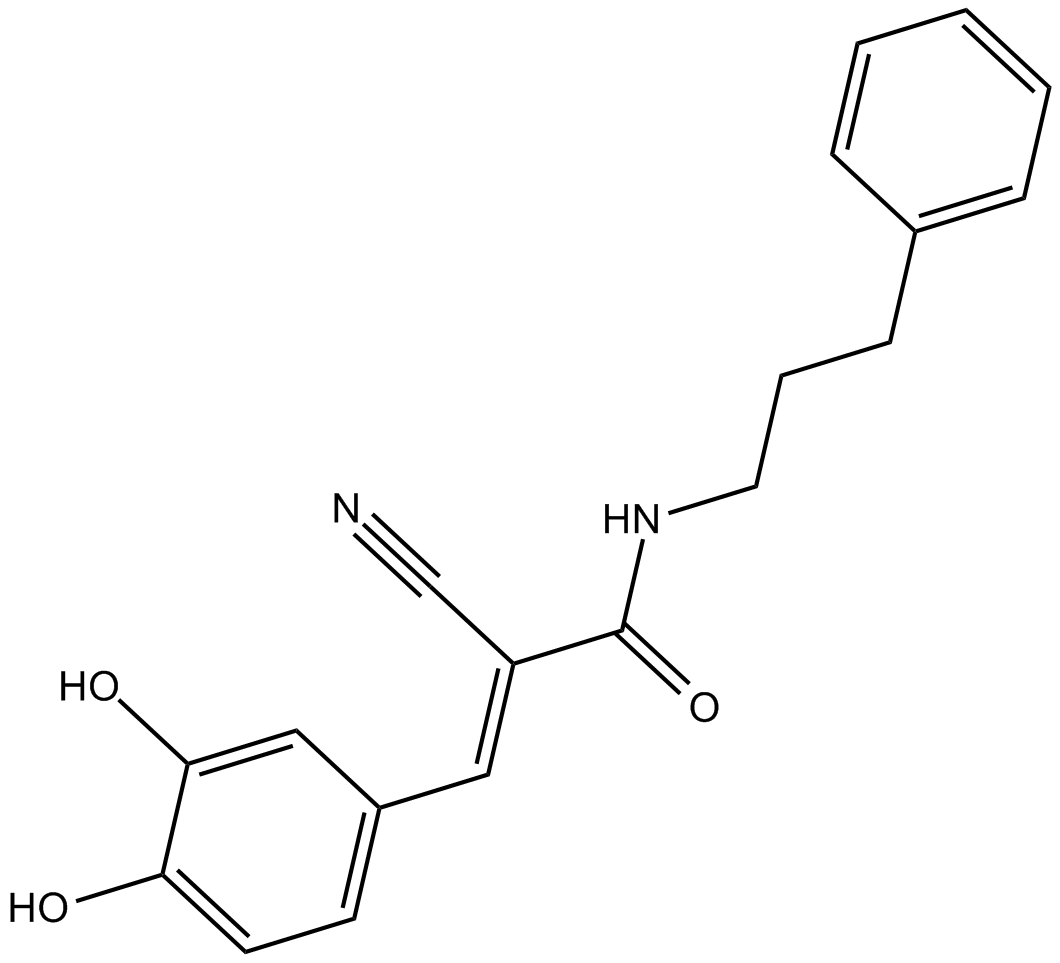
-
GC30178
Ajugol
Ajugol ist ein Iridoidglykosid, das aus Sideritis germanicopolitana isoliert werden kann.
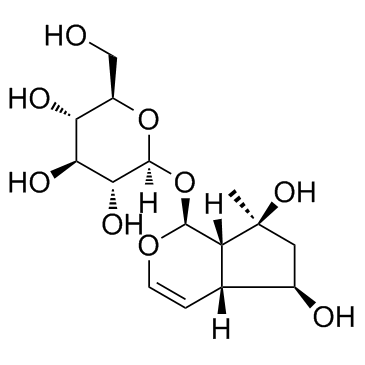
-
GC33974
Aklomide (2-Chloro-4-nitrobenzamide)
Aklomid (2-Chloro-4-nitrobenzamide) wird verwendet, um Krankheiten, Parasiten und Insekten zu bekÄmpfen, die GeflÜgel befallen.
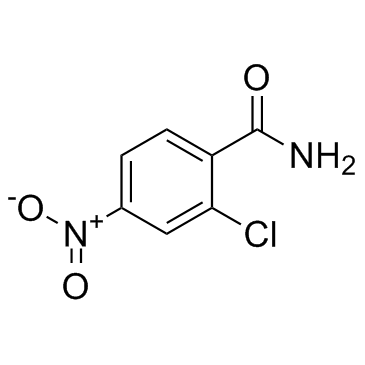
-
GC11255
Alamethicin
Alamethicin, isoliert aus Trichoderma viride, ist ein kanalbildendes Peptid-Antibiotikum und induziert eine spannungsgesteuerte LeitfÄhigkeit in Modell- und Zellmembranen.

-
GC13593
Albendazole
Albendazol (SKF-62979) ist ein oral wirksames Breitspektrum-Parasitizid mit hoher Wirksamkeit und geringer WirtstoxizitÄt, das fÜr die Erforschung von Magen-Darm-Parasiten bei Menschen und Tieren verwendet wird.
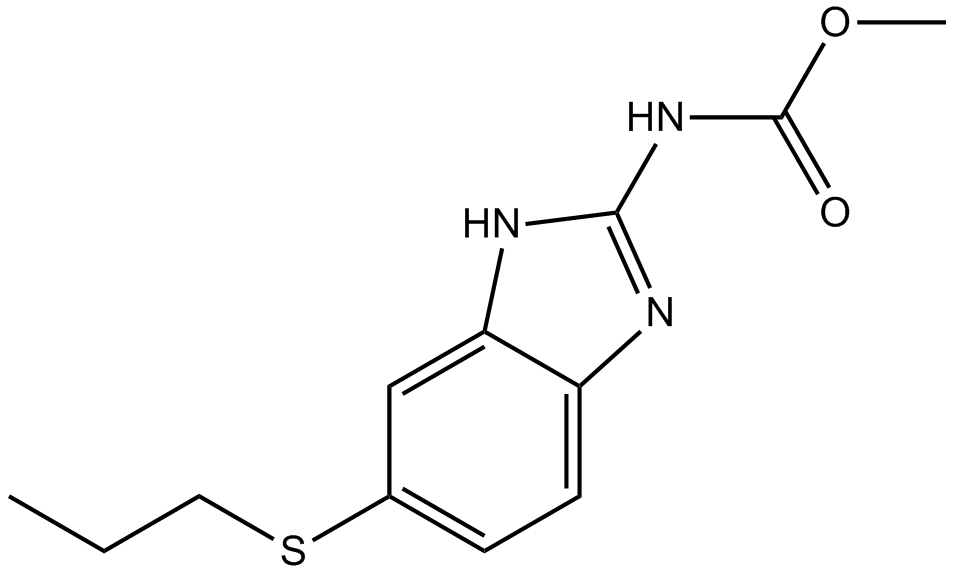
-
GC35276
Albendazole D3
Albendazol D3 (SKF-62979-d3) ist das mit Deuterium markierte Albendazol, das zu den Benzimidazolverbindungen gehört und als Medikament zur Behandlung einer Vielzahl von Wurmbefall verwendet wird.
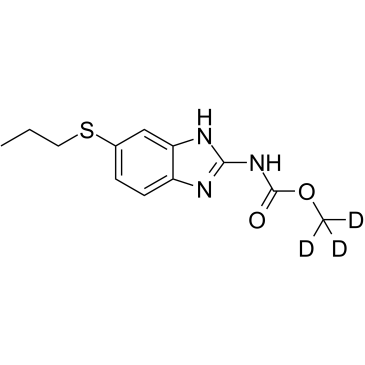
-
GC17811
Albendazole Oxide
Albendazoloxid (Ricobendazol), der wichtigste aktive Metabolit von Albendazol, zeigt eine antiparasitÄre Wirkung gegen Echinococcus multilocularis Metacestodes.
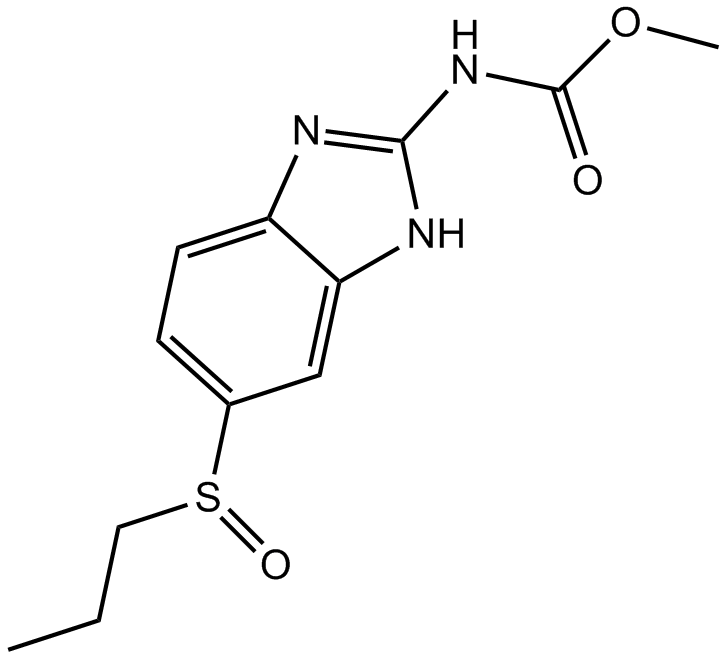
-
GC35277
Albendazole sulfoxide D3
Albendazolsulfoxid D3 ist Deuterium-markiertes Albendazolsulfoxid, das ein Breitspektrum-Anthelminthikum ist.
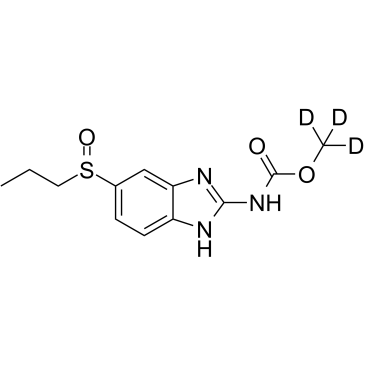
-
GC41080
Albofungin
Albofungin is a xanthone isolated from A.
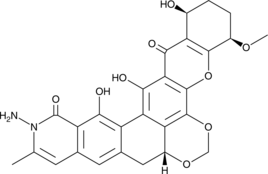
-
GC32379
Aliconazole
Aliconazol ist ein antimykotisches Imidazol-Derivat.
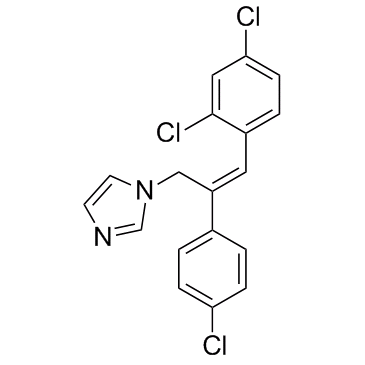
-
GC32072
Alisporivir (DEB-025)
Alisporivir (DEB-025) (Debio-025) ist ein Cyclophilin-InhibitormolekÜl mit starker AktivitÄt gegen das Hepatitis-C-Virus (HCV).
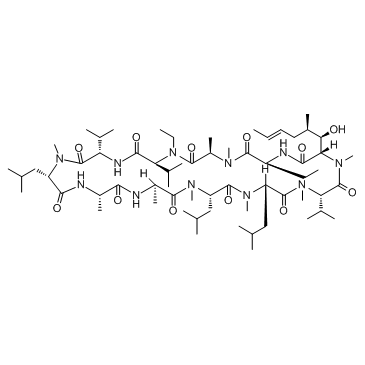
-
GC30940
Allergen Gal d 4 (46-61), chicken (Lysozyme C (46-61) (chicken))
Allergen Gal d 4 (46-61), Huhn (Lysozyme C (46-61) (Huhn)) ist ein HÜhnereiweiß-Lysozym-Peptid.
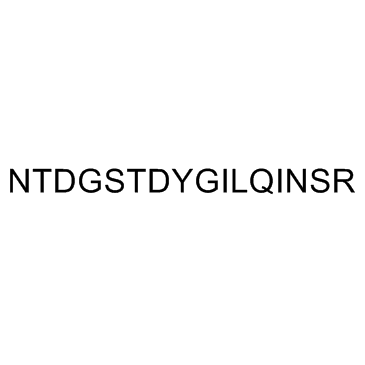
-
GC34462
Allicin
Ein Naturprodukt mit vielfältigen biologischen Aktivitäten.
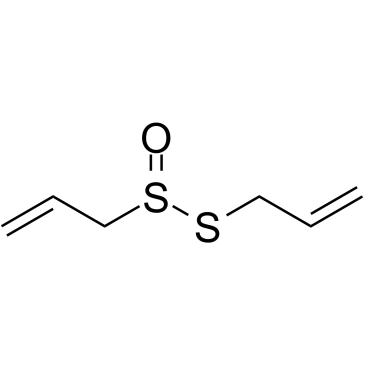
-
GC35295
Allopurinol riboside
Allopurinol-Ribosid, ein Metabolit von Allopurinol, zeigt starke AktivitÄten gegen Parasiten.
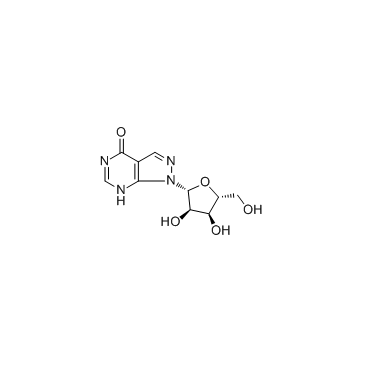
-
GC38661
Allyl methyl sulfide
Allylmethylsulfid ist eine bioaktive Organoschwefelverbindung, die in Knoblauch vorkommt.
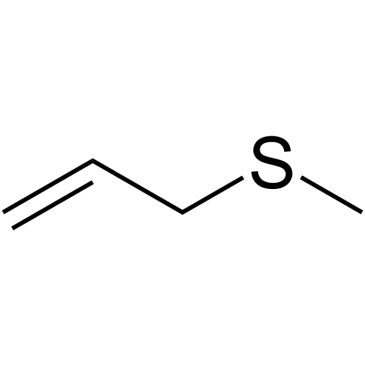
-
GC35300
Aloin(mixture of A&B)
Aloin (Mischung aus A&B) ist ein aus Aloe Vera isoliertes Anthrachinon-Derivat.
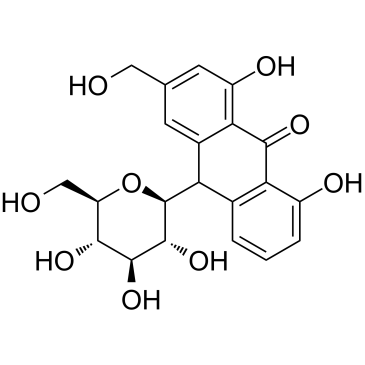
-
GC14314
Aloperine
Aloperin ist ein Alkaloid in Sophora-Pflanzen wie Sophora alopecuroides L, das krebshemmende, entzÜndungshemmende und antivirale Eigenschaften gezeigt hat.
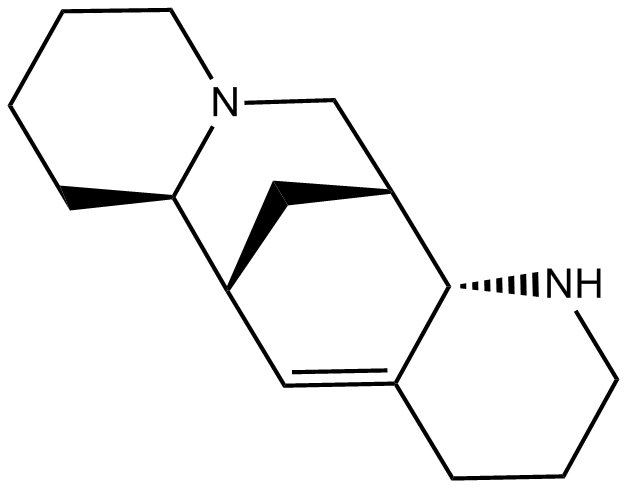
-
GC35306
alpha-Mangostin
Alpha-Mangostin (α-Mangostin) ist ein diÄtetisches Xanthon mit breiten biologischen AktivitÄten, wie z. B. antioxidative, antiallergische, antivirale, antibakterielle, entzÜndungshemmende und krebshemmende Wirkungen. Es ist ein Inhibitor der mutierten IDH1 (IDH1-R132H) mit einem Ki von 2,85 μM.
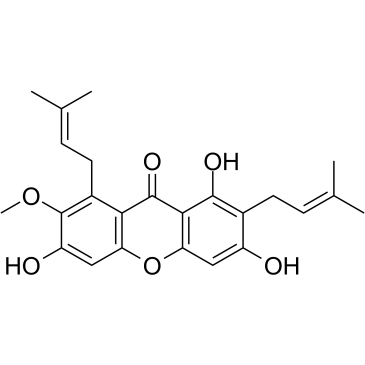
-
GC32070
ALS-8112
ALS-8112 ist ein potenter und selektiver Respiratory-Syncytial-Virus (RSV)-Polymerase-Hemmer.
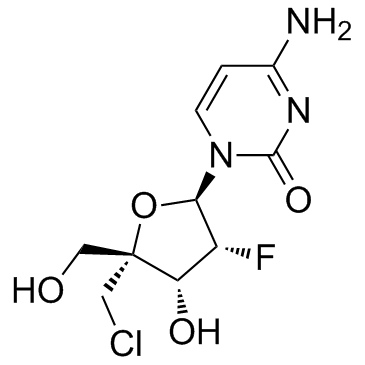
-
GC39796
Alstonine
Alstonin ist eine wichtige Indolalkaloidverbindung eines pflanzlichen Heilmittels.
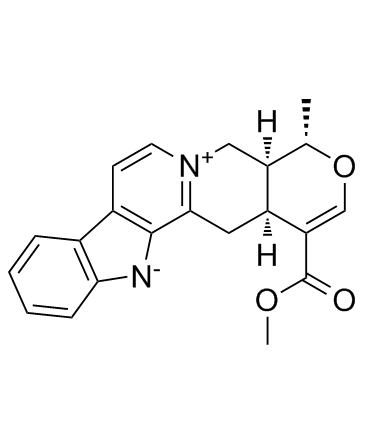
-
GC10779
Alternariol
Alternariol ist ein Mykotoxin, das von Alternaria-Arten produziert wird.
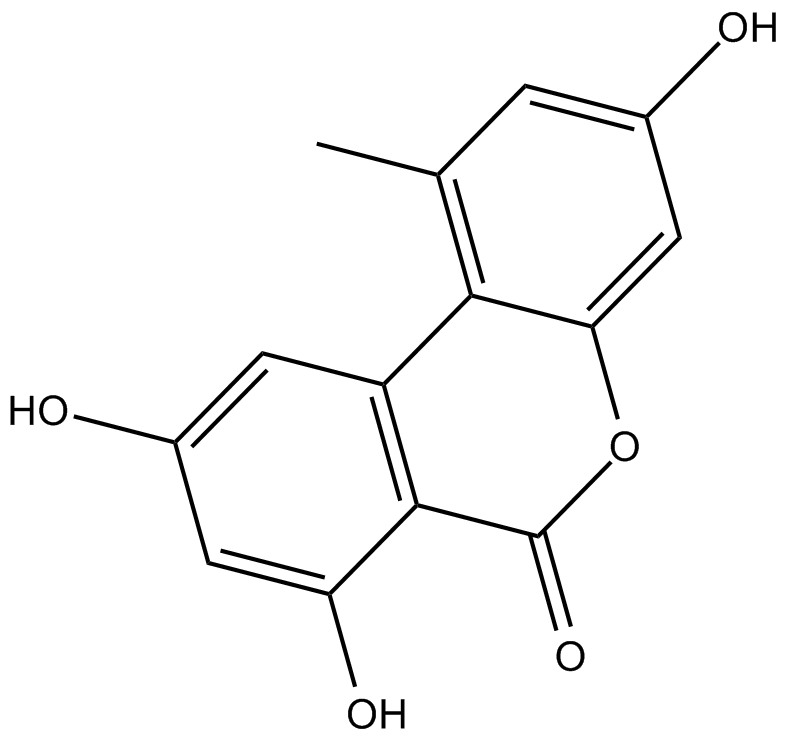
-
GC49039
Althiomycin
A thiazole antibiotic
